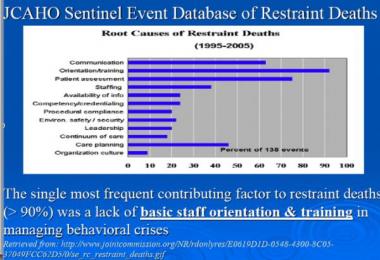





Restraint and seclusion: Is it torturing or teaching your child?
Over the past decade, three GAO reports have shocked the nation. The May 2009 Government Accountability Office's shocking report on “selected cases of death and abuse” was not about some detention facility for terrorists, but rather about schools, juvenile justice and psychiatric treatment sites caring for America’s children. Real Danger: Restraints and Our Children illuminates the controversial practice of using physical and chemical restraints in a variety of settings. Parents of children killed or injured in restraint, former consumers, treatment staff, administrators on many sides of the debate, and visionary thinkers who offer evidence-based alternatives all contribute to this complex conversation. First person accounts assert that restraints can be abolished as the culture moves from problem solving via force to creating trauma-sensitive environments. An original score, lively animation, archival footage, (Walter Cronkite) intimate interviews, home movies, and live action shots taken inside these facilities deliver an unexpectedly uplifting portrayal of great, personal strength in the midst of despair.
Written, Produced, Directed & Edited by Maryanne Galvin for the Massachusetts Department of Mental Health
Executive Producer: Dr. Janice LeBel, Massachusetts Department of Mental Health
For further information, contact Dr. Janice Lebel, Dept. of Mental Health, Boston, MA
Please note: This film is graphic and can be disturbing to watch. Please take care of yourself while viewing.




![Restraint/Seclusion laws by state: Fact: Positive behavior supports are safer and more effective than restraints and seclusion. The state of Massachusetts used National Association of State Mental Health Program Directors Best Practice Recommendations on positive behavior supports to reduce the use of restraints, resulting in a 72.9% decrease in episodes among children, a 47.4 % decrease among adolescents and a 59% decrease among facilities with mixed groups of children and adolescents.viii [i] LeBel, J., & Goldstein, R. (2005). The economic cost of using restraints and the value added by restraint reduction or elimination. Psychiatric Services, 56: 9.](https://www.maryannegalvin.com/files/styles/8_columns/public/stills/29restrain-c1.jpg?itok=X6doJ56_)







